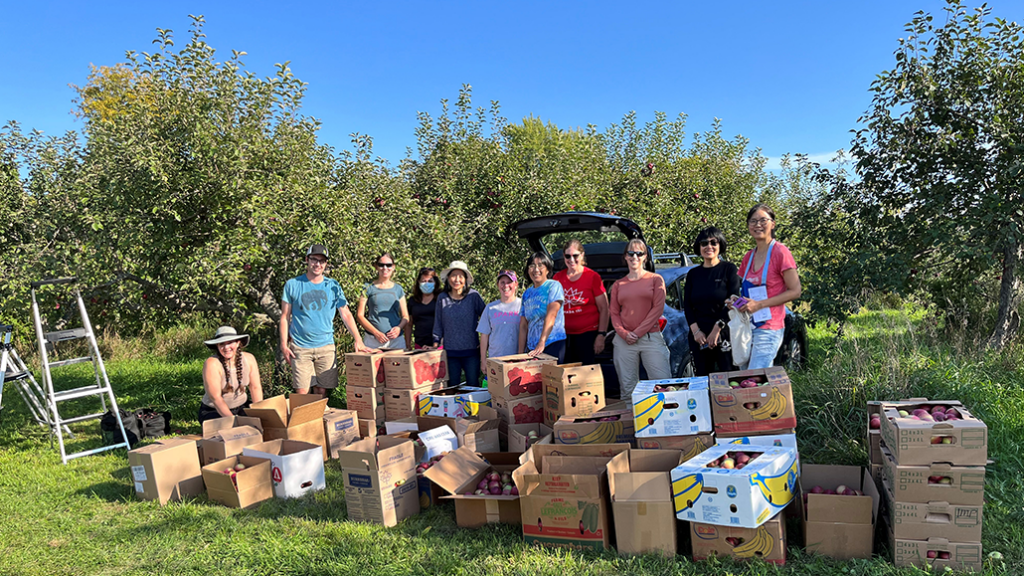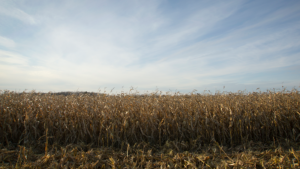Rural food insecurity
INNOVATIVE FOOD PROGRAMS HELP ADDRESS HUNGER

EVERYONE IS FEELING the pinch at the grocery store. According to Canada’s Food Price Report 2023 — a joint effort by researchers from Dalhousie University, University of Guelph, University of British Columbia, and University of Saskatchewan — food prices in Canada had risen 10.3 per cent in 2022, much higher than the predicted five to seven per cent. For an average family of four, that meant an annual food budget increase of $455.44.
And food is not the only cost going up for Canadian families: housing, transportation, and utility costs have all been impacted by inflation. And despite record-low unemployment, stagnant wages and low provincial social assistance rates means more are struggling financially.
The net result? More Canadians than ever before are turning to food banks and social services agencies to help make ends meet and keep food on their table.
Between April 1, 2021, and March 31, 2022, more than 587,000 people accessed a food bank in Ontario — a 15 per cent increase over the past three years. Between January and September 2022, the number of people accessing food banks increased a further 22 per cent, with one in every three being first-time visitors, according to the 2022 Feed Ontario Hunger Report.
WHO USES A FOOD BANK?
According to Food Banks Canada’s Hunger Count 2022 report, 50 per cent of food bank clients rely on provincial social assistance benefits; single-person households account for 45 per cent of food bank users; and one-third of food bank clients are children.
And more seniors are accessing food banks — from 6.8 per cent of food bank clients in 2019 to 8.9 per cent in 2022.
And for the first time, Food Banks Canada reported a significant increase in the number of food bank clients who reported employment income as their main source of income — increasing from 12.5 per cent in 2021 to 14.1 per cent in 2022.
IMPACT ON RURAL COMMUNITIES
According to Marilyn King, chair of the North Huron Community Food Share in Wingham, Ontario, which services the rural municipalities of North Huron, Huron East, Morris-Turnberry, Howick, Ashfield-Colborne-Wawanosh, Huron Kinloss, and South Bruce, the need continues to grow.
“In August, we served 183 families, which was 510 individuals, compared with 162 families, 448 individuals, one year ago,” she says.
And while she says the majority of food bank users rely on government benefits like Ontario Disability Support Benefit Program (ODSP), Canada Pension Plan, or Ontario Works (OW), they have seen a stark increase in the number of employed people relying on their service.
“In August 2023, 24 families working full-time came to us for food, compared with seven families last August.”
According to Feed Canada, 35 per cent of food bank users in the Riding of Huron-Bruce, where North Huron Community Food Share operates, relied on social assistance in 2021 — where $733 was the maximum OW for a single person and $1,169 was the maximum ODSP benefit. Eleven per cent of Huron-Bruce residents lived below the poverty line; 13 per cent of children lived in households under the poverty line.
And while the current minimum wage is $16.55 per hour, the living wage in Huron-Bruce has been calculated to be $20.70.
King says that while the Food Share’s volunteers are doing their best; they have had to make difficult decisions about spending their donation dollars.
“As food prices remain high, our food share is forced to make difficult decisions on what we can afford to purchase for clients. Feminine hygiene products, adult diapers, shampoo, toothpaste and soap fall into this category. Folks need to be able to maintain some dignity,” she says.
The Food Share is grateful to local farmers who donate meat and produce, offering a tax receipt for the value of the donation.
“We are fortunate that the communities we serve have been so generous and supportive over the past 28 years, and now, when the need is so great, we appeal to our communities to help us continue.”
INNOVATIVE WAYS TO ADDRESS HUNGER
Brian Innes, by day, is executive director of Soy Canada, a national association uniting all groups driving the Canadian soybean industry, from farm to marketplace.
On the weekends, you may find him picking apples, pears, cherries, walnuts, grapes, haskap berries, and even ginko nuts as a volunteer with Ottawa-based not-for-profit Hidden Harvest.
Hidden Harvest works with landowners with fruit trees or other produce to harvest food that may otherwise go to waste. The harvested food is shared between the volunteer harvesters, the landowner, and more than a dozen community food programs in the Greater Ottawa area.
“We connect people who have food, with people who have time to harvest it, with people who need food,” says Innes.
Harvest events can range from an urban property with one or two fruit trees to large orchards, like the one in September 2023, where Hidden Harvest picked 2,200 pounds of apples. Ten local agencies benefited from the group’s volunteer efforts.
What makes Hidden Harvest’s program successful, says Innes, is making the best use of technology to maximize the volunteers’ time and get as much produce harvested as possible. A smartphone app connects the organization’s more than 2,000 volunteers to local harvest locations and local food agencies that will receive the food — making the best use of everyone’s time, reducing food waste, and providing food for those who need it.
Find out more at www.ottawa.hiddenharvest.ca.
Grain Farmers of Ontario’s 15 Districts support their local food banks, including District 8 (Huron), whose contributions support local food agencies including the North Huron Community Food Share. •























